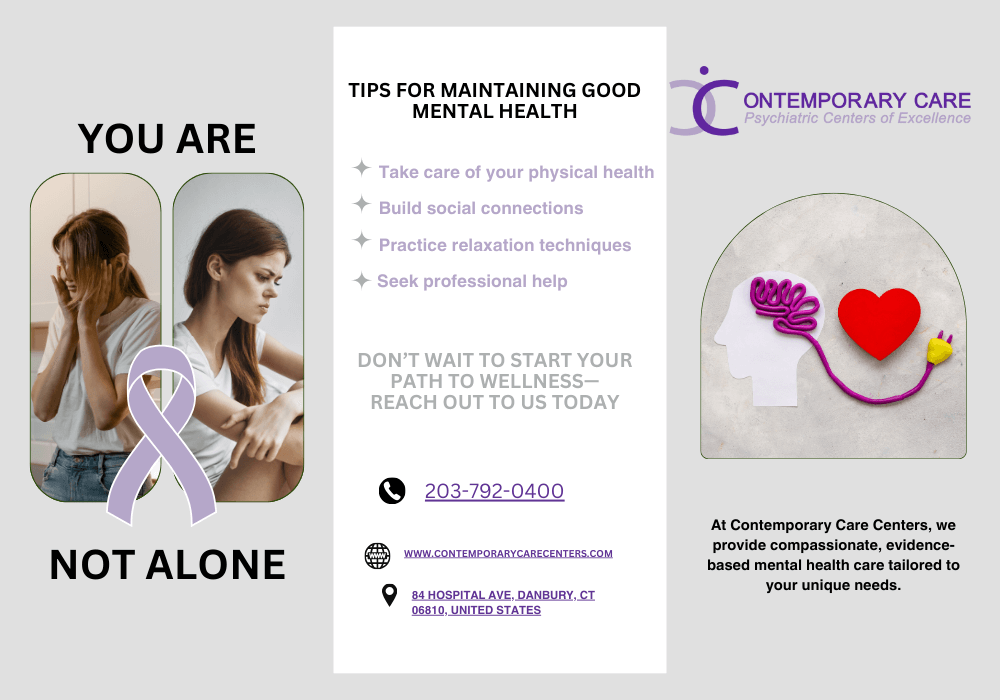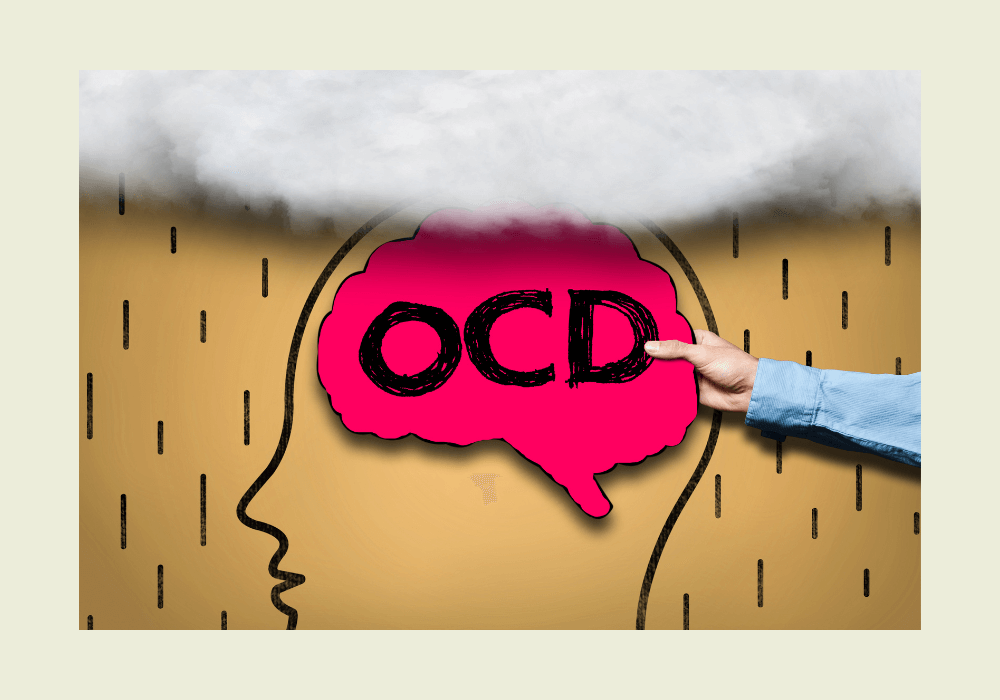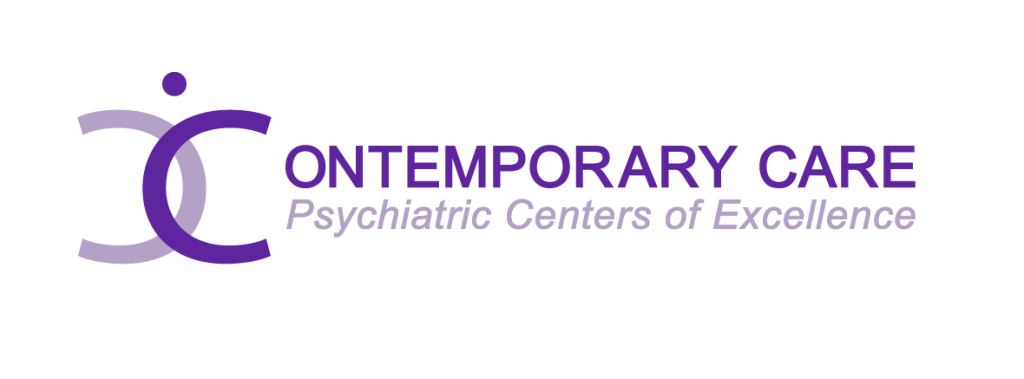Transcranial Magnetic Stimulation (TMS) is becoming a popular treatment for people with Obsessive-Compulsive Disorder (OCD), especially for those who haven’t had success with traditional treatments like medication or therapy. If you’re thinking about trying TMS for OCD, you probably have a lot of questions. How well does it work? What is the success rate? What can you expect during treatment? In this post, we’ll cover everything you need to know about TMS therapy for OCD, its success rate, and what happens during a typical treatment session.
Key Points About TMS for OCD:
- TMS is an FDA-approved, non-invasive treatment that uses magnetic pulses to stimulate specific areas of the brain.
- It’s mainly used for people who haven’t responded well to medications or therapy for OCD.
- Success rates vary, but many patients experience significant symptom relief.
- Side effects are minimal, with mild headaches being the most common.
- TMS is not a cure for OCD, but it can offer long-term symptom management.
What is TMS Therapy for OCD?
TMS therapy is a non-invasive, safe treatment that stimulates parts of the brain involved in OCD symptoms. The idea behind TMS is that OCD can be linked to certain areas of the brain not working as they should. With TMS, doctors can use a magnetic field to target and activate these specific brain regions.
How Does TMS Work?
TMS involves using a device that creates a magnetic field. This device is placed on your scalp, usually near the front of your head, where it can affect the brain’s prefrontal cortex. The prefrontal cortex is believed to be responsible for many of the thought patterns and behaviors linked to OCD.
Here’s how a typical TMS session works:
- Electromagnetic pulses are delivered to the brain through a coil.
- The coil is placed on your head, focusing on the area of the brain connected to OCD symptoms.
- The magnetic pulses activate the neurons (brain cells) in that region, which may help reduce obsessive thoughts and compulsive behaviors.
TMS is non-invasive, which means there is no need for surgery or any medical procedures that break the skin. It’s done while you’re fully awake, and you can go about your day after each session.
How Effective Is TMS Therapy for OCD?
If you’re considering TMS therapy for OCD, you’re probably wondering how effective it is and what the success rate looks like. TMS is not a cure for OCD, but it can significantly reduce symptoms for many people. However, like any treatment, it doesn’t work the same for everyone.
What Do Studies Show?
- Research suggests that TMS can reduce OCD symptoms in around 30-50% of people who haven’t found success with other treatments.
- Some studies show that when TMS is combined with cognitive-behavioral therapy (CBT) or medication, the success rate can go even higher.
- Patients often report a 50% or greater reduction in symptoms after completing a full course of TMS therapy.
TMS tends to work best for people with treatment-resistant OCD. This means they’ve tried medications like selective serotonin reuptake inhibitors (SSRIs) or undergone behavioral therapy, but their symptoms haven’t improved enough.
Who is TMS for?
TMS is usually recommended for people who:
- Have tried multiple medications without relief.
- Experience severe side effects from OCD medications.
- Have not found success with talk therapy (like CBT).
- Prefer a non-invasive, drug-free treatment option.
What Are the Long-Term Benefits of TMS?
TMS can offer long-lasting symptom relief, though it’s important to understand that it’s not a permanent cure for OCD. Most people who undergo TMS will need follow-up or “maintenance” sessions in the future to manage their symptoms. However, the fact that many patients experience long-term relief is one of the biggest draws of TMS.
Why Do Patients See Long-Term Improvement?
TMS doesn’t just mask symptoms like medications often do. It stimulates the brain in a way that can lead to lasting changes. Here’s how TMS might help over the long term:
- Rewiring brain circuits: The magnetic stimulation helps “retrain” the brain’s circuitry, reducing the intensity of obsessive thoughts and compulsions.
- Sustainable improvement: Patients often see a long-lasting reduction in their symptoms, even after stopping TMS.
- Better quality of life: Many people report being able to return to work, social activities, and normal daily life after TMS therapy.
While long-term success depends on individual cases, TMS can be a life-changing treatment for many patients with OCD.
What Can You Expect During a TMS Session?
If you’re thinking about trying TMS therapy for OCD, you might be curious about what the treatment process looks like. Luckily, the treatment is simple, and most people find it easy to fit into their daily routine.
What Happens During a Typical Session?
A TMS session is pretty straightforward:
- Preparation: You’ll sit in a chair, and a doctor or technician will place the electromagnetic coil on your head.
- Pulses: The device will start sending magnetic pulses into your brain. You might feel a light tapping sensation on your scalp.
- Relax: Each session lasts about 20-40 minutes, and you can relax during the process. You’ll be awake the entire time.
- Aftercare: Once the session is done, you can go about your day as usual. There’s no recovery time needed.
You’ll usually need to go for TMS therapy sessions five times a week for about 4-6 weeks. Some people might need more or fewer sessions depending on their response to the treatment.
Side Effects
One of the biggest benefits of TMS therapy is the lack of major side effects. Some people experience:
- Mild headaches after a session, but these usually go away quickly.
- A tingling sensation or light discomfort on the scalp during treatment, but it’s not painful.
Unlike medications, TMS doesn’t come with side effects like weight gain, fatigue, or emotional numbness.
What is the Success Rate of TMS for OCD?
The success rate of TMS therapy for OCD can vary depending on the individual and how their brain responds to the treatment. However, the general success rates from clinical studies and patient reports are promising.
Clinical Success Rates
- 30-50% of patients experience significant symptom reduction, especially those who haven’t responded to traditional treatments.
- Many patients report a 50% decrease in obsessive thoughts and compulsions after completing a full course of TMS.
- TMS is more effective when combined with therapies like CBT or medications, raising the success rate in some cases.
While TMS doesn’t work for everyone, it offers a solid alternative for people who have been struggling with treatment-resistant OCD.
Personal Success Stories
Patients who benefit from TMS often share stories of:
- Reduced anxiety and fewer compulsive behaviors.
- The ability to return to normal daily activities, such as work or school.
- An overall improvement in quality of life and mental health.
Although TMS is not a cure for OCD, it can provide significant relief for people who haven’t found success elsewhere.
How Does TMS Compare to Other Treatments?
When looking at treatment options for OCD, it’s important to compare TMS therapy to other methods, like medication and cognitive-behavioral therapy (CBT). Each approach has its pros and cons, but TMS stands out for several reasons.
TMS vs. Medications
Medications, especially SSRIs, are often the first treatment offered for OCD. While these can help some patients, they come with risks and side effects, such as:
- Weight gain.
- Sleep disturbances.
- Emotional numbness.
For people who either don’t respond to medications or struggle with these side effects, TMS offers a drug-free alternative. Unlike medications, which affect the entire brain and body, TMS targets specific areas of the brain, resulting in fewer side effects.
TMS vs. Cognitive-Behavioral Therapy (CBT)
CBT, especially exposure and response prevention (ERP), is considered the gold standard for treating OCD. However, CBT requires active participation, which can be difficult for people with severe symptoms.
- TMS doesn’t require active participation, making it a more passive treatment option.
- While CBT focuses on changing thought patterns, TMS works on the brain’s physical structure, offering a different approach to managing OCD symptoms.
- Studies suggest that combining TMS with CBT can lead to even better outcomes, making both treatments complementary.
Who Should Consider TMS for OCD?
If you’re struggling with OCD and haven’t found relief from medications or therapy, TMS therapy could be a great option. TMS is generally safe, well-tolerated, and effective for many people with treatment-resistant OCD. It’s a non-invasive, drug-free solution that has helped countless people manage their symptoms.
Consider TMS if:
- You’ve tried multiple medications without success.
- You experience strong side effects from OCD medications.
- You haven’t seen improvement from traditional therapies like CBT.
- You prefer a non-invasive treatment option with minimal side effects.
FAQs About TMS Therapy for OCD
What’s the success rate of TMS for OCD?
Studies show that TMS can reduce symptoms in 30-50% of people with treatment-resistant OCD. Some patients experience even greater relief, especially when TMS is combined with other treatments like CBT.
How long does it take to see results?
Most people start to notice improvements in their OCD symptoms after about 2-4 weeks of starting TMS therapy. Full results are usually seen after completing the full course of treatment, which lasts around 4-6 weeks.
Are there any risks or side effects?
TMS is considered a safe treatment with very few side effects. The most common side effect is mild headaches, which usually go away after the session.
Is TMS therapy covered by insurance?
In many cases, insurance covers TMS for people with OCD, especially if other treatments haven’t worked. However, coverage can vary depending on the provider, so it’s a good idea to check with your insurance company.

Transform Your OCD Treatment Journey with Contemporary Care Centers
At Contemporary Care Centers, we provide compassionate, evidence-based mental health care tailored to your unique needs. If you’re struggling with OCD and traditional treatments haven’t worked, our expert team is here to help with innovative solutions like Transcranial Magnetic Stimulation (TMS) therapy. This cutting-edge approach targets specific areas of the brain to reduce symptoms and improve your quality of life. Our holistic care model combines the latest therapeutic techniques with personalized support to ensure you receive the highest quality care. Don’t wait to start your path to wellness—reach out to us today and let us partner with you on your journey toward a healthier, more fulfilling life.




